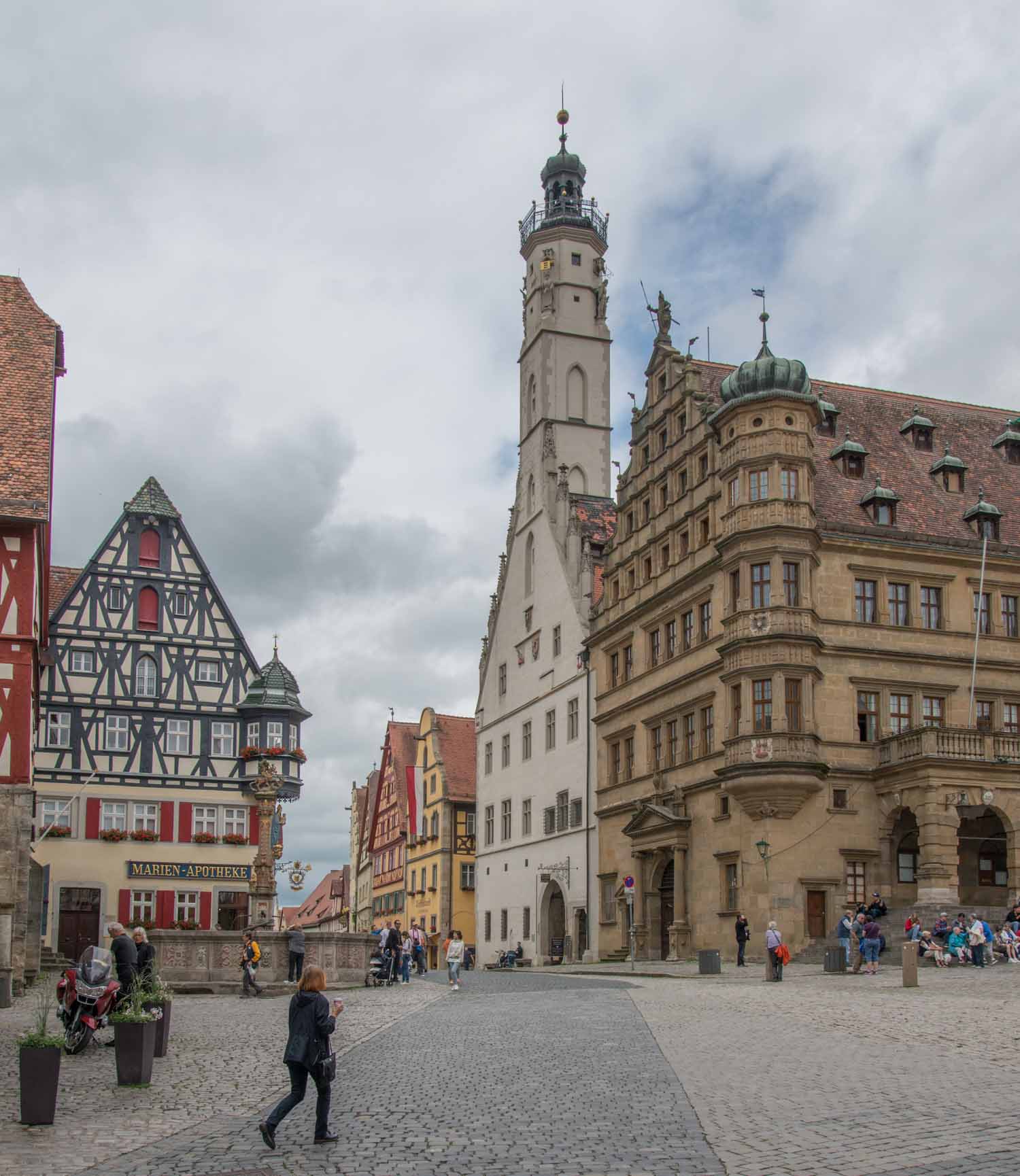Today, having endured two days of closed shops due to Germany’s Whitsun Bank Holiday, we desperately set a course for everybody’s favourite European supermarket starting with an “L” to restock our depleted rations. It may seem rather boring to shop in the same supermarket wherever we go, and it probably is, but one interesting and rather unscientific side effect is seeing national character displayed in the way that essentially identical shops are run in different countries.
In Southern Europe, in particular Southern Italy and Greece, whenever you enter a LIDL, be it busy or quiet (mostly quiet) there is always a long queue at the tills, often with only one till open. This contrasts with Britain, where whenever a small queue builds up another till is quickly opened. Today, probably because it was just after a bank holiday, the car park in Dinkelsbühl’s LIDL, was packed and I was expecting a long wait to pay for my shopping. Never fear, this is Germany, all of the tills were open and I experienced the sort of wait I would expect in Greece if there were a total of five people in the entire shop!
Following our quick shop we headed up the nearby motorway to Rothenburg ob der Tauber (Rothenburg from now on). As many of you will know, Germany is still the only country in Europe (as far as I am aware) where sections of their motorways have no speed limit. It soon becomes obvious that you are on one, as it was today, because Basil rocks slightly as the air pressure is changed by the latest Porche, BMW or Mercedes to fly past him at 120 miles an hour plus!
Rothenburg is the third of the well preserved medieval towns we decided to visit on the Romantic Road. It’s history is similar in many ways to Nördlingen and Dinkelsbühl – free Imperial City in the Holy Roman Empire, captured in the 30 years wall but luckily not much damaged and relatively unscathed in the Second World War.

There is a slightly darker history to its recent past however. Rothenburg was seen by many Nazi idealists as the perfect example of a German “home town” and one prominent Nazi organisation arranged trips to Rothenburg from all over Germany. Many in Rothenburg welcomed this connection to National Socialism, partly because of the economic benefits and partly because the Nazi’s hailed it as “the most German of German towns”. In 1938 it was one of the first German towns to expel its Jewish population.

Given its Nazi connections Rothenburg was fortunate to survive the Second World War relatively intact. It suffered one allied bombing raid, but when the Americans reached Rothenburg the American Assistant Secretary of War realised the historic importance and beauty of the town and ordered his Generals not to use artillery to capture it. The General in charge sent 12 soldiers into the town under white flags to offer to the Germans that they would not destroy the town if the German’s surrendered. Despite Hitler’s orders that each town should fight to the last man the German commander agreed to surrender and Rothenburg was saved.

During our visit we concluded that it probably is the most picturesque of the three similar towns we have visited, but in some ways it is almost too perfect. Sarah said, correctly, that at times it felt as if you were in Disneyworld. It is slightly larger than Nörlingen and Dinkelsbühl but is clearly the most popular with the streets full of, mostly tasteful, tat shops and large groups of American, Chinese and other nationalities.

The Tourist Information office told us that there was an organised English speaking tour at 2pm every day but in the end we decided to explore some of the lesser frequented streets on our own ending up at a large Biergarten for a heavy Franconian lunch and a beer or two.

As we sat in the Biergarten we were fascinating to watch a large group of American teenagers, it turned out they had just graduated from High School, sit down for lunch. The “cool kids” at one end of the huge table all ordered large beers while the rest dutifully asked for water. There was much amusement, as they finished their meal, even surprisingly amongst the waiting staff, when one of the cool kids demonstrated that he was not familiar with alcohol as he regurgitated his meal, his drinks and his cool with them, all over the Biergarten floor!

I am aware that I have not been very descriptive regarding Rothenburg, but that is because in terms of its medieval buildings and complete town wall it was much the same as the other two towns we have visited on the Romantic Road, except perhaps Rothenburg is just a little too prettified in places and you will have to mingle with far bigger crowds than is necessary in exploring Nörlingen or Dinkelsbühl, which have much the same charm.

Finally our Stellplatz in Rothenburg (49.370821, 10.182850 €12 with water and electricity extra) is one of two huge facilities which between them can accommodate over 80 motorhomes! I think there must be nearly 50 in ours and I am glad we emptied and filled this morning because I don’t fancy my chances of being one of fifty motorhomes trying to fill up at one tap in the morning!
I just realised, while inserting photos into this post, how similar Rothenburg, Nördlingen and Dinkelsbühl are, because I have had to concentrate to ensure the photos in this post are Rothenburg and not ones I have already published from the other two towns!
